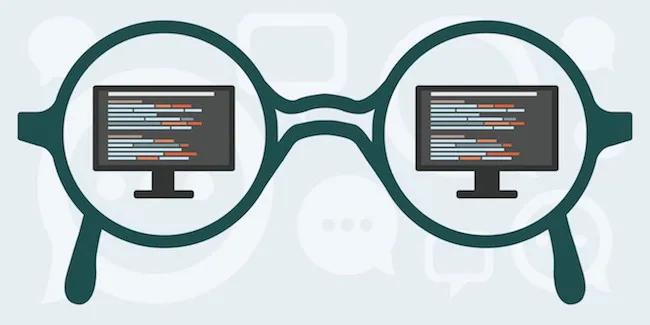Exaud Blog
Blog

How to Perform an Effective Code Audit | The Basics
A code audit ensures that an application and its components are free of security breaches and other possible issues. Posted onby Exaud
A code audit ensures that an application and its components are free of security breaches, performance bottlenecks and other potential issues. In 2025, with the growing complexity of software, from enterprise web solutions to embedded systems and AI-powered applications, a well-executed code audit has become a non-negotiable step in ensuring security, compliance and maintainability.
At Exaud, we help companies deliver high-quality, robust software through a proven code audit process that combines automated analysis tools with the expertise of our senior engineers.
What Is a Code Audit?
A software code audit is a comprehensive analysis of a product’s source code, aiming to assess its security, performance, scalability and maintainability. It is a critical step in modern DevSecOps practices and can also validate compliance with industry regulations such as GDPR, HIPAA or PCI DSS.
Whether for a custom software development project, an embedded IoT solution or a large-scale enterprise system, a code audit provides insights into code maturity, architecture quality and overall readiness for production or handover.
Why Should You Perform a Code Audit?
Beyond basic bug detection, a code audit in 2025 should aim to:
1 Understand the current project structure and architecture.
2 Identify existing and potential bugs.
3 Detects security vulnerabilities, from common exploits to AI-specific risks such as data leakage or prompt injection.
4 Validate performance and scalability against expected usage scenarios.
5 Assess maintainability, refactoring needs and associated costs.
6 Verify compliance with development standards and best practices.
7 Ensure compatibility with the latest frameworks, libraries and APIs.
8 Improve energy efficiency and sustainability of the codebase (Green Software Engineering principles).
From a business perspective, regular audits help avoid costly incidents, speed up development cycles and protect customer trust.
Manual vs Automated Code Reviews
An effective audit combines automated scanning with human expertise:
Automated Tools: SonarQube, Snyk, CodeQL, GitHub Advanced Security or OWASP Dependency-Check for detecting common vulnerabilities and code smells.
Manual Review: Experienced engineers identifying architectural flaws, logic errors and subtle performance bottlenecks.
At Exaud, we integrate both methods, ensuring that no issue, from low-level embedded code to complex AI model integration, goes unnoticed.
How to Structure a Code Audit
A modern code audit process can be broken into these stages:
Initial Assessment
Engineers familiarise themselves with the project, architecture and documentation.
Automated Analysis
Scanning for common vulnerabilities, style guideline violations and dependency risks.
Manual Review
Detecting deeper issues in logic, security, performance and maintainability.
Security & Compliance Testing
Including penetration testing and verification against regulatory frameworks.
Consolidated Report
Combining automated and manual findings, ranked by severity and including actionable recommendations.
Code Audit Checklist
Let’s transform the code audit structure into an actionable checklist. To make a code audit truly effective, companies should follow a structured checklist that aligns both technical depth and business objectives. Below is a practical framework that development teams and decision-makers can adopt:
Define Objectives Clearly: Security hardening, performance optimization, compliance validation or technical debt reduction.
Map Critical Components: Identify modules, APIs, databases and third-party integrations that need deeper inspection.
Run Automated Scans First: Tools like SonarQube, CodeQL or Snyk quickly highlight common issues and vulnerabilities.
Perform Manual Deep Dives: Senior engineers should analyse architectural decisions, scalability trade-offs and long-term maintainability.
Evaluate Compliance Risks: Verify alignment with GDPR, HIPAA, PCI DSS or industry-specific frameworks.
Document and Prioritize: Rank findings by severity and impact on business continuity.
Plan Remediation: Assign ownership, timelines and cost estimation for fixing critical issues.
By embedding this checklist into regular development cycles, organizations can transform code audits from a one-off technical task into a repeatable governance practice that safeguards security, compliance and software sustainability.
Best Practices for a Code Audit
Define Scope and Checklist
Ensure all stakeholders agree on the review depth and focus areas.
Use a Hybrid Approach
Combine automated scanning with expert-led manual inspection.
Encourage a Positive Review Culture
Treat findings as improvement opportunities, not personal criticism.
Bring in External Auditors
Fresh eyes often reveal overlooked issues.
Audit Regularly
Small, continuous reviews prevent last-minute crises and deployment delays.
Integrate into CI/CD Pipelines
Run automated checks at every build stage.
Monitor Post-Deployment
Use runtime monitoring tools to detect security or performance issues after release.
Code Audit in Different Contexts
Custom Software: Ensures the codebase aligns with the specific needs and growth plans of your business.
Embedded Systems & IoT: Detects vulnerabilities in resource-constrained environments where downtime is critical.
AI & ML Applications: Reviews data pipelines, model integration code and security around model APIs.
Final Thoughts
A code audit is not just a technical task, it’s a strategic investment in software longevity, security and performance. Whether you are launching a new app, maintaining an existing platform or inheriting a legacy system, regular audits will help you control quality, reduce risks and speed up development. If you’re ready to take the next step, explore our software development services or talk to our team about a tailored code audit plan for your project.
Related Posts
Subscribe for Authentic Insights & Updates
We're not here to fill your inbox with generic tech news. Our newsletter delivers genuine insights from our team, along with the latest company updates.